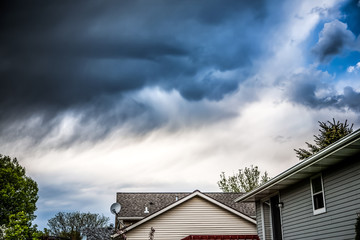
Finding a little bit of water on your concrete floor might seem unimportant. You may just dismiss it and think it is not a big deal, it will dry on its own. However, water-damaged concrete can be extremely devastating to homeowners and business owners. If not properly addressed, it can cause mold growth and structural issues.
Keep on reading to find out how largely concrete can be damaged by water and how you can repair it.
1. Potential Causes of Water Damage to Concrete
Several different things can cause concrete to be water damaged. The most common reason is due to improper waterproofing, which can affect the structural integrity of the surrounding concrete, causing water damage to any existing concrete.
Another contributing factor to water damage in concrete structures is tree root growth and seismic soil movement. Water can enter concrete and slowly erode it over time through settlement cracks.
Plumbing leaks can also be the source of large-scale damage to a concrete foundation. Leaking pipes left unchecked can decrease the stability of the surrounding concrete over time, ultimately leading the surface to crack and crumble.
Pooling water from a pipe leak can seep into the pores of the concrete, creating further deterioration over time and resulting in an uneven floor.
Additionally, concrete flooring is more likely to have residual water damage, because of its porous nature. This issue tends to occur in basements and crawl spaces, being that they are usually built from a concrete foundation.
Water damage to concrete considerably impacts its strength. When excess water penetrates the concrete grains, it causes them to spread apart and crack, consequently creating more space between the grains. Even after the excess water has dried, these gaps remain and fill with air, lessening the durability of the concrete.
It is not uncommon for mold spores to develop within water damaged cement. The dark and moist environment in concrete cracks are the perfect environment for mold spores to grow and spread.
Many homes are built on concrete foundations, which if not taken care of properly, can lead to a dangerous living situation. If you live in a home that has a concrete foundation, ensuring that your home is properly waterproofed is essential.
2. How to Identify If Cement is Wet
One of the easiest ways to tell if concrete is wet or dry is by visual inspection. Look at the concrete’s surface: if it is somewhat shiny, it is more than likely wet.
If the concrete is dry, you’ll know by its light and dull appearance. You can also test the firmness of the concrete to see if it is wet. Press your finger into the concrete and see if it pierces through easily. If it’s still too firm, then it’s likely still wet.
For more accurate results, purchase a moisture meter. Moisture meters measure the amount of moisture in common materials, such as wood and cement.
Insert two pins into your material and read the percentage value shown on the screen; percentages above 10 percent indicate moisture in your material. Remember that different kinds of meters have different thresholds, so make sure you get one properly meets your needs.
3. How to Deal With Wet Concrete
The first thing you need to do when mitigating water damaged concrete is identify the source of the problem. Causes could possibly be a leaking roof, plumbing issue, or flooding from a nearby body of water.
Now that you have identified the source of the water damaged concrete, it’s important to take preventative measures so that it does not happen again. If the source is a leaking roof, you’ll need to get the roof either repaired or replaced altogether. For plumbing issues, contact a professional plumber to find and fix the leak.
In the event of a flood, you might need to contact a disaster restoration company, like PuroClean, to evaluate water damage and, if necessary, remove any standing water from your home. A restoration company may also be able to detect any potential mold issues, being that water damage within concrete can lead to excessive mold growth.
4. How to Repair Damaged Concrete
After identifying and fixing the water damage source, you’ll need to then fix the concrete itself. Depending on how bad the damage is, you will need to either patch the concrete or replace it entirely. If you decide to patch the concrete, consider wearing personal protective equipment (PPE) to protect yourself.
Patching is typically only used for minor cracks and holes, whereas a complete replacement of the concrete is necessary when there is crumbling and/or flaking away. Also consider sealing your concrete after repairs to prevent future water damage.
When repairing wet concrete, the first step is to clean the area. Remove any dirt or debris as well as any standing water that is present. Large pieces of debris, such as stones or rocks, need a shovel or brush to be removed.
Once all the debris is gone, use a garden hose to rinse remaining dirt and dust particles. Before taking the next step, allow the area time to dry completely.
Once the concrete has been properly cleaned and is completely dry, use a putty knife or trowel to scrape any loose concrete slabs from the damaged area. After all loose material has been removed, use a wire brush or grinder to smooth out any bumps or blemishes on the surface.
Follow manufacturer instructions to mix your mortar and apply it generously over the affected area using a trowel or putty knife. Work in small sections so that your mortar does not dry before you are able to spread it evenly over your work surface. Finally, allow your mortar mix to dry and cure for 24-48 hours.
After your concrete foundation is repaired and sealed, it’s critical to inspect the area regularly for signs of any additional damage. Address any new leaks or water pooling A.S.A.P. before more damage occurs. Regular maintenance and proper care can ensure that your concrete remains in good condition for years to come.
If You Are Experiencing Water Damage, Contact PuroClean Disaster Restoration of Charleston
Water damage can be devastating and overwhelming. This is why it’s crucial to have a property damage restoration company ready to call so that the mitigation of your property can begin as soon as possible. At PuroClean, we promise to work with you quickly and efficiently to restore any water damage. Our certified technicians are dedicated and experienced in providing top-notch customer service with the latest advancements in technology-based solutions and services. We go above and beyond to ensure that our clients receive excellent care. Please don’t hesitate to call us at (843) 972-4200. We work 24/7, 365 days a year to restore your property!







 PuroClean Disaster Restoration Specialists of Charleston
PuroClean Disaster Restoration Specialists of Charleston